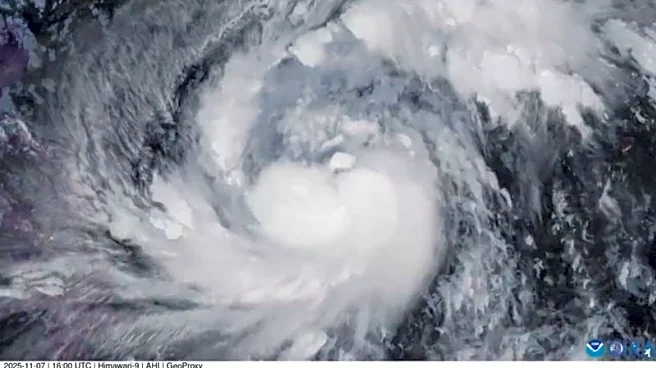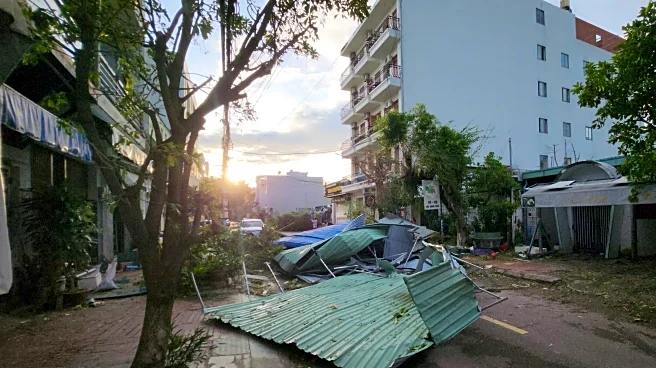What's Happening?
Super Typhoon Fung-wong, one of the most powerful storms to hit the Philippines this year, is causing significant disruption as it approaches landfall. The typhoon has already resulted in at least two
fatalities and has prompted the evacuation of over a million people from vulnerable areas. The storm, locally known as Uwan, is the 21st to impact the nation this year, which typically experiences around 20 storms annually. Fung-wong is currently affecting the central and eastern regions of the Philippines with heavy rains and strong winds, leading to widespread power outages in the Bicol region. The storm is expected to make landfall in Aurora province, with sustained winds of 185 kph and gusts up to 230 kph. Authorities have placed many areas under the highest storm warning levels, and several airports have been closed as a precaution.
Why It's Important?
The impact of Super Typhoon Fung-wong is significant as it adds to the strain on the Philippines' disaster response capabilities, which are already stretched thin following the devastation caused by Typhoon Kalmaegi. The current storm threatens to exacerbate the humanitarian situation, with potential for further casualties and infrastructure damage. The mass evacuations highlight the severity of the threat posed by the typhoon, as well as the ongoing challenges faced by the Philippines in managing frequent and severe weather events. The economic implications are also considerable, with disruptions to transportation and potential damage to agriculture and infrastructure.
What's Next?
Fung-wong is expected to continue its path northwest, maintaining typhoon intensity before turning north. By mid-week, it is projected to move towards the Taiwan Strait, potentially impacting Taiwan before weakening. The Philippines will need to focus on recovery efforts and providing aid to affected regions, while also preparing for any further storms that may arise. The international community may offer assistance to support the Philippines in managing the aftermath of the typhoon.













